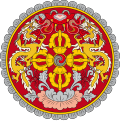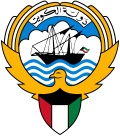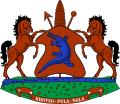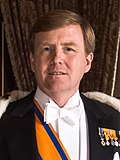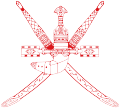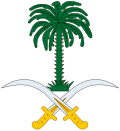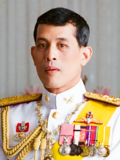Top Qs
Timeline
Chat
Perspective
List of current monarchs of sovereign states
From Wikipedia, the free encyclopedia
Remove ads
Remove ads
A monarch is the head of a monarchy, a form of government in which a state is ruled by an individual who normally rules for life or until abdication, and typically inherits the throne by birth.[1] Monarchs may be autocrats (as in all absolute monarchies)[2] or may be ceremonial figureheads, exercising only limited or no reserve powers at all, with actual authority vested in a legislature and/or executive cabinet (as in many constitutional monarchies).[3] In many cases, a monarch will also be linked with a state religion.[4] Most states only have a single monarch at any given time, although a regent may rule when the monarch is a minor, not present, or otherwise incapable of ruling.[5] Cases in which two monarchs rule simultaneously over a single state, as is the current situation in Andorra, are known as coregencies.[6]
Monarchs of various countries:
- Examples of absolute monarchs (top row):
- Examples of executive monarchs (middle row):
- Examples of ceremonial monarchs (bottom row):
A variety of titles are applied in English; for example, "king" and "queen", "prince" and "princess", "grand duke" and "grand duchess", "emperor" and "empress". Although they will be addressed differently in their local languages, the names and titles in the list below have been styled using the common English equivalent. Roman numerals, used to distinguish related rulers with the same name,[7] have been applied where typical.
In political and sociocultural studies, monarchies are normally associated with hereditary rule; most monarchs, in both historical and contemporary contexts, have been born and raised within a royal family.[6][8] Succession has been defined using a variety of distinct formulae, such as proximity of blood, primogeniture, and agnatic seniority. Some monarchies, however, are not hereditary, and the ruler is instead determined through an elective process; a modern example is the throne of Malaysia.[9] These systems defy the model concept of a monarchy, but are commonly considered as such because they retain certain associative characteristics.[10] Many systems use a combination of hereditary and elective elements, where the election or nomination of a successor is restricted to members of a royal bloodline.[11][12]
Entries below are listed beside their respective dominions, which are organised alphabetically. These monarchs reign as head of state in their respective sovereign states. Monarchs reigning over a constituent division, cultural or traditional polity are listed under constituent monarchs. For a list of former ruling families or abolished thrones, see: former ruling families.
Remove ads
Monarchs by country
Remove ads
See also
Notes
- The Bishop of Urgell and the president of France each hold the position of co-prince of Andorra, but there is no personal title attached to the role.
- Charles is currently King of fifteen separate Commonwealth realms.
- Agnatically a member of the House of Glücksburg.
- Hamad bin Isa reigned as Amir of the State of Bahrain until 14 February 2002, when he assumed the new title of King of Bahrain under a new Constitution.[30]
- The House of Saxe-Coburg and Gotha[32] is a branch of the House of Wettin.[33]
- Coronation took place 6 November 2008.[35]
- Coronation took place 1 August 1968.[37]
- Coronation took place 29 October 2004.[38]
- The king is selected for life by the Royal Council of the Throne from amongst the male descendants of kings Ang Duong, Norodom, and Sisowath.[41]
- Officially the House of Schleswig-Holstein-Sonderburg-Glücksburg, which is a branch of the House of Oldenburg.[42]
- Agnatically a member of the House of Monpezat, but officially a member of the House of Glücksburg through his mother Margrethe II.
- Succession is subject to customary law, and does not follow primogeniture. A council of elders selects who among the reigning king's wives will be mother of the next king. This woman will succeed as Ndlovukati upon her son's ascension to the throne, and will rule alongside him for the duration of his reign. The king's first two wives are considered ineligible.[44][45]
- "Naruhito" is the current emperor's given name, but it is not his regnal name, and he is never referred to as this in Japanese. The era of Naruhito's reign bears the name "Reiwa", and according to custom he will be renamed "Emperor Reiwa" following his death.[citation needed][47]
- The formal enthronement ceremony was held on 22 October 2019.[48]
- The Japanese emperor does not have a family name.[49][50] The use of the name "Yamato" for the household derives from the ancient Yamato Court.[51] It is used often as a name for the imperial dynasty, but has no official basis.
- Formally enthroned on 9 June 1999.[53]
- Succession is based upon primogeniture. However, the reigning king may also select his successor from among eligible princes.[54]
- Formally enthroned on 20 December 2023 upon the invitation of Parliament.[57]
- The heir is appointed by the reigning emir, and the nomination must also be approved by a majority of members in the National Assembly.[58] The throne was traditionally alternated between the two main branches of the Al Sabah family – the Al Salem and Al Jaber – until 2006.[59][60] The current emir is of the Al Jaber branch.
- Coronation took place 31 October 1997. Has previously reigned as king from 12 November 1990 until 25 January 1995.[62]
- Formally enthroned on 15 August 1990.[citation needed] Prior to his accession, Hans-Adam had served as prince regent since 26 August 1984.[64] On 15 August 2004, the prince formally appointed his son Alois, Hereditary Prince of Liechtenstein as regent, in preparation for his succession to the throne, but remained head of state in accordance with the constitution.[65]
- Prior to formal enthronement, Henri had served as prince regent since 4 March 1998.[66] On 8 October 2024, the Grand Duke formally appointed his son Guillaume, Hereditary Grand Duke of Luxembourg as regent, in preparation for his succession to the throne, but remained head of state in accordance with the constitution.
- The royal family of Luxembourg are members of the House of Nassau-Weilburg,[67] descended from the House of Nassau and the Parma branch of the House of Bourbon.
- Officially known in Malay as the "Yang di-Pertuan Agong", which roughly translates as "Supreme Head of State", and is rendered officially by government sources in English as "King".[68]
- The Yang di-Pertuan Agong is elected to a five-year term by and from amongst the nine hereditary rulers of the Malay states, who form the Council of Rulers. The position has to date been, by informal agreement, systematically rotated between the nine; the order was originally based on seniority.[71]
- Formally enthroned on 30 July 1999.[77]
- The Dutch royal family is descended from the Houses of Nassau and Lippe. [79][80]
- Formally enthroned on 21 January 1991, and consecrated on 23 June 1991. Prior to his accession, Harald had served as prince regent since 1 June 1990.[82]
- Succession is determined by consensus within the House of Saud as to who will be Crown Prince. This consensus may change depending on the Crown Prince's actions:[86]
- Succession is based upon male primogeniture. However, Felipe VI currently has no male children.[88]
- Formally enthroned on 19 September 1973.[90]
- Vajiralongkorn was proclaimed King on 1 December 2016 with retroactive effect to the date of his father's death.[92] The coronation took place from 4 – 6 May 2019.[93][94]
- A line of the Tuʻi Kanokupolu dynasty.[96][97]
- The Prime Minister is the head of the government. However, with the consent of the Supreme Council, the office is appointed by the President, who retains considerable power.[99]
- According to the Constitution, the President of the United Arab Emirates is elected by the Federal Supreme Council from among the individual rulers of the seven emirates.[99] However, by informal agreement the Presidency is always passed to the head of the Al Nahyan clan, the Sheikh of Abu Dhabi (see constituent monarchs), which makes it a de facto hereditary position. In addition, the appointed Prime Minister has always been the head of the Al Maktoum clan and Sheikh of Dubai.[100]
- Formerly Cardinal Robert Francis Prevost. Reigns as Sovereign of the Vatican City State, by virtue of being Bishop of Rome.
Remove ads
References
External links
Wikiwand - on
Seamless Wikipedia browsing. On steroids.
Remove ads
































